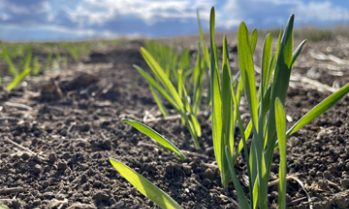Green Manure Crops and Summerfallow Coverage
SCIC defines a green manure crop as a crop containing at least half legume species that is returned to the soil to improve soil fertility. Volunteer crops and weeds are not considered green manure crops (as defined by Crop Insurance) and their growth must be controlled in all soil zones by July 11 and maintained thereafter.
To be eligible for summerfallow coverage the following year in the brown and dark brown soil zones, green manure crop growth must be terminated by July 11. Termination for annual and biennial green manure crops is defined by SCIC as “limiting crop water use and managing weeds by controlling most aboveground plant material”. Methods which may qualify as adequate termination include tillage, roller-crimping, mowing and high-intensity grazing.
To encourage soil conservation in the brown and dark brown soil zones, summerfallow land may have a late-season cover or catch crop seeded on or after August 1 and remain eligible for summerfallow coverage the following year. There is no legume requirement for these late-season cover crops.
For the black, dark grey, and grey soil zones, there is no termination deadline for annual or biennial green manure crops. However, to maintain summerfallow coverage the following year, weeds must be adequately controlled and no plant material can be removed from the field. In addition, perennial crops need to be terminated before winter for land to be eligible for summerfallow coverage the following year in these soil zones. Perennial crops require more traditional methods of termination to stop plant growth for the subsequent year, such as tillage.
If the above conditions for summerfallow coverage the following year are not met, the acres will be insured for stubble coverage the following year.









